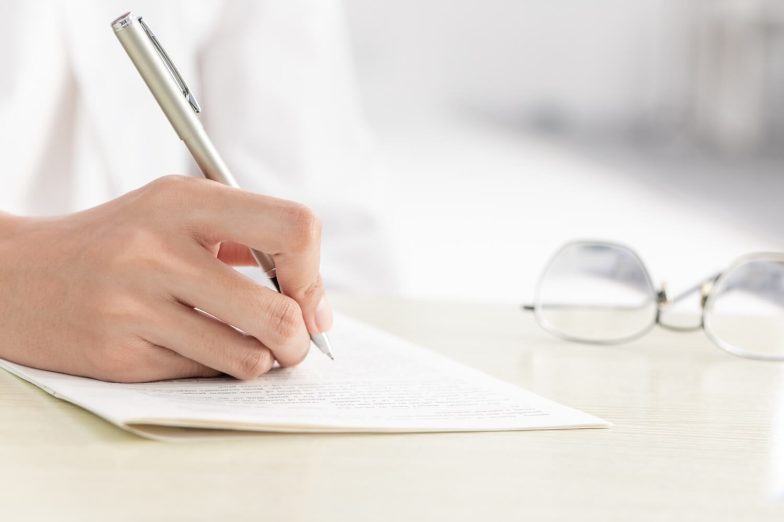Crafting a memorable cover letter can be likened to an art form. It’s your preliminary handshake with a potential employer, offering a unique opportunity to make a lasting impression that extends beyond the bullet points of your resume. This document is your chance to narrate your professional journey, highlight your passion, and underline the unique value you could bring to a team.
Given the competitive nature of job applications, a well-constructed cover letter can be the deciding factor that places you in the spotlight. Here’s a comprehensive guide on how to master the art of the cover letter, ensuring your introduction is not just seen but remembered.
Understanding the Cover Letter’s Purpose
Contrary to some beliefs, a cover letter is not merely an extension of your resume. It serves a deeper purpose: to personally introduce you to the hiring manager, to underscore the most relevant parts of your background, and to demonstrate your potential to contribute to the company’s success. It’s your narrative pitch that should complement, not duplicate, the factual outline of your resume.
The Importance of Research and Personalization
The journey of crafting your cover letter begins with diligent research. Understanding the company’s culture, its mission, the role’s responsibilities, and the industry challenges can offer insights into how to position yourself as the solution they didn’t know they needed. This groundwork allows you to personalize your letter, making a direct appeal to the company’s needs and showing how your skills and experiences are in sync with their objectives. Addressing the letter to a specific individual, rather than a generic “To whom it may concern,” adds a layer of personalization that can significantly impact your application’s reception.
Crafting a Compelling Opening
The opening lines of your cover letter are critical. They’re your first impression, your make-or-break moment to capture the reader’s interest. Begin with enthusiasm, clearly stating why the position excites you and how your background makes you the ideal candidate. If you have a personal connection to the company or a mutual contact, mention it here—it can serve as an effective hook.
Highlighting Key Experiences and Skills
In the main section of your cover letter, you explore the details, discussing your qualifications and experiences in depth. Choose one or two pivotal experiences or skills that align closely with the job description. Instead of merely asserting your abilities, illustrate them through concise anecdotes or quantifiable achievements that demonstrate your competency and how it applies to the prospective role. This section is about painting a vivid picture of your capabilities in action.
Demonstrating Enthusiasm and Cultural Fit
Employers are not just looking for skilled individuals; they’re looking for candidates who are genuinely excited about the opportunity and who will mesh well with the team. Use part of your cover letter to express your enthusiasm for the role and the company. Discuss how your personal values align with the company’s mission or how you admire their work, products, or services. This shows that you’re not just interested in any job, but you’re particularly interested in this job with this company.
The Effective Conclusion: A Call to Action
Your closing paragraph is where you wrap up your letter with a strong, memorable finish. Reiterate your keen interest in the role and your belief in your ability to contribute positively to the team. Politely request the opportunity for an interview and express your eagerness to further discuss how you can help the company achieve its goals. This call to action is your final nudge to the hiring manager, prompting them to take the next step.
Professionalism and Proofreading
Throughout your cover letter, maintain a professional tone and format. Your ability to communicate clearly and effectively is under scrutiny, so make every word count. Before sending, proofread meticulously for typos, grammatical errors, or awkward phrasing. A clean, error-free cover letter not only reflects your professionalism but also your respect for the recipient’s time and your serious intent regarding the position.
Additional Tips for a Standout Cover Letter
Customize for Each Application:
While it might be tempting to use a generic template, customization can significantly increase your chances of standing out. Tailor each letter to the job and company, showing that you’ve made an effort to understand what they’re looking for.
Use Keywords:
Integrate key terms from the job listing into your cover letter to align it closely with the position’s requirements and expectations This not only shows that you’ve paid attention to the details but also helps if the company uses applicant tracking systems (ATS) to screen applications.
Show, Don’t Tell:
Whenever possible, provide examples that demonstrate your skills and achievements. Quantifiable results and specific scenarios where you’ve applied your abilities can make a more compelling case than simply stating your competencies.
Keep It Concise:
While it’s tempting to share your entire professional history, remember that the cover letter is a highlight reel, not a biography. Aim for brevity and relevance, keeping your letter to a single page.
Conclusion
Creating a memorable cover letter is about more than showcasing your qualifications; it’s about telling your story in a way that resonates with the hiring manager. It requires a blend of research, personalization, and the ability to articulate your value proposition in a concise yet compelling manner. By following these guidelines, you can craft a cover letter that not only captures attention but also paints you as the ideal candidate for the role, laying the foundation for a successful job application. Remember, in the canvas of job hunting, your cover letter is your personal masterpiece—make it memorable.







